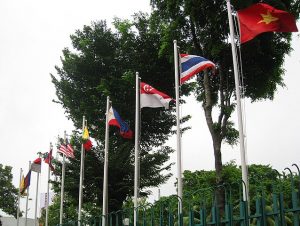Statutory rights to maternity leave are available to working women in 185 countries, but only 78 offer statutory rights to paternity leave. Nordic countries set the global benchmark for policies that support men’s involvement in parenting, but paternity leave is fast becoming a hot topic in Southeast Asia. Among other countries in the region, the Philippines, Vietnam, Myanmar and Indonesia have each instituted paternity leave policies of varying durations, wage replacement rates, funding sources and eligibility requirements.
The Philippines first introduced national paternity leave legislation in 1996, providing married fathers employed in the private and public sectors with seven working days of paid leave at full pay for up to four children. In 2019, changes to the Maternity Leave Act came into effect allowing any female worker entitled to maternity leave to transfer up to 7 of her 105 days of paid leave to the child’s father, regardless of whether they are married or not. This new policy means men are eligible for up to 14 paid leave days and makes the Philippines a pace setter in the region.
Mandatory, state-sponsored paternity leave paid from social insurance came into effect in Vietnam in 2016. Employed, married fathers are entitled to paid paternity leave for between five to 14 days. The duration of allowed leave depends on the type of birth, number of children born and if the child is adopted. Meanwhile in Myanmar, employed fathers have been entitled to 15 days of paid paternity leave since 2012. To be eligible, fathers are required to have made at least six months of social security contributions in the 12 months prior to the child’s birth.
Indonesia introduced paternity leave paid for by employers in 2003. The policy provides employed, married fathers with two days of paternity leave at full pay for the birth of a child or a miscarriage. Male public servants in Indonesia are eligible for one month of paternity leave during which they receive their basic pay.
International interest in paternity leave has also seen a number of corporations operating in Southeast Asia develop their own paternity leave policies. Unilever Philippines has extended paid paternity leave to 20 days, with same-sex partners eligible. Global tech firm Accenture, also in the Philippines, provides 30 days of paternity leave — more than double the entitlement available to working fathers under the 2019 legislation.
The benefits of paternity leave extend to parents, children and business. When fathers take paternity leave, mothers benefit through increased childcare support, additional time to heal after childbirth, additional emotional support, a reduction in stress and a smoother transition back to work.
Fathers benefit from stronger relationships with their children and partner. A survey of more than 6000 men across South and Southeast Asia linked fathers’ involvement in the care of young children with lower levels of intimate partner violence. Paternity leave has also been found to deliver health benefits to fathers including lower levels of depression and reductions in levels of smoking and alcohol consumption. In addition, paternity leave has been linked to the increased involvement of fathers in unpaid household labor, leading to a shift in gender norms and stronger relationships.
Paternity leave delivers significant benefits to children’s health as it can positively affect a mother’s decision to breastfeed. Children’s health and development have also been found to improve through more on-time immunizations, better emotional, physical and cognitive development, lowered infant mortality, and longer breast-feeding. Increased involvement of the father in a child’s early years has been linked to better family relationships, which often translate to higher school performance.
The business case for paternity leave is also compelling. Paternity leave policies signal more supportive corporate cultures and lead to increases in commitment from employees. Businesses benefit from men taking paternity leave through improved attraction and retention of staff, which leads to productivity gains. Because paternity leave supports women’s attachment to the workforce, it can also assist governments in achieving their targets for improved female workforce participation.
Yet in spite of the benefits, research on paternity leave in OECD economies show that men may be reluctant to take leave, fearful that they will be stigmatized in their workplaces. This is also a concern expressed by men in Southeast Asia. But evaluations of paternity leave show that supportive organizational cultures and generous wage replacement rates can play a significant role in enhancing men’s uptake of the policy. Periods of ‘non-transferable’ leave and additional incentives paid to fathers who take paternity leave have been shown to improve uptake in Nordic countries and could be considered by Southeast Asian countries.
Another barrier to paternity leave in Southeast Asia is high rates of employment in the informal economy. Extending paternity leave to fathers working informally is a challenge for governments. The exclusion of informal workers from paternity leave eligibility leaves a significant portion of families without the household, economic and societal benefits that it provides.
Interest in fathers and care is rapidly gaining traction around the globe, including in Southeast Asia. Despite the obstacles of cost, the informal economy and stubborn gender roles, paid paternity leave will lead to positive spin-offs for parents, children, business and the community at large.
Marian Baird is Professor of Gender and Employment Relations at the University of Sydney; Elizabeth Hill is Associate Professor of Political Economy at the University of Sydney; and Lisa Gulesserian is a graduate research student at the University of Sydney. This piece was originally appeared over at East Asia Forum here and is republished here with kind permission.

































